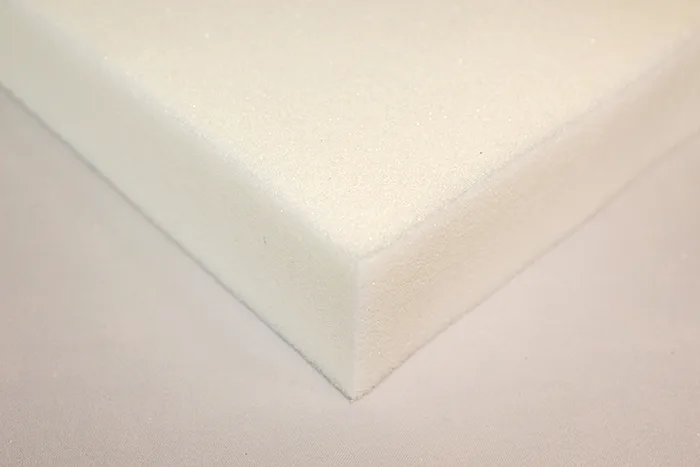Introduction:
Your mattress is more than just a place to sleep; it’s a sanctuary for relaxation and rejuvenation. However, over time, it can also become a breeding ground for dust mites, sweat, dead skin cells, and other allergens. Regular cleaning is essential for maintaining a healthy sleep environment and prolonging the lifespan of your mattress. In this comprehensive guide, we’ll explore various methods for cleaning a mattress, ensuring you can enjoy a clean and fresh bed every night.
Why Regular Mattress Cleaning is Important:
Imagine spending one-third of your life in a space filled with dust, dirt, and allergens. That’s the reality for many people who neglect mattress cleaning. Over time, your mattress accumulates sweat, dead skin cells, dust mites, and other debris, creating an environment ripe for allergens and bacteria to thrive.
This buildup not only affects the quality of your sleep but can also lead to health issues such as allergies, asthma, and skin irritations. Regular cleaning helps remove these contaminants, promoting better sleep and reducing allergy symptoms.
Understanding Different Types of Mattress Stains and Odors:
Before diving into cleaning methods, it’s essential to identify the types of stains and odors present on your mattress. Common stains include sweat, urine, blood, and food or beverage spills, each requiring specific treatment to ensure complete removal. Sweat stains, for example, can penetrate deep into the mattress fabric and leave behind unpleasant odors if not properly cleaned.
Urine stains not only leave a visible mark but also create an environment conducive to bacteria growth and odor. Blood stains, although smaller in size, can be stubborn to remove if not addressed promptly. Food or beverage spills can attract pests and lead to mold growth if left untreated. By understanding the nature of the stains and odors on your mattress, you can choose the most effective cleaning method for tackling them.
Essential Tools and Supplies for Cleaning Your Mattress:
Before you begin cleaning your mattress, gather the necessary tools and supplies. You’ll need a vacuum cleaner with an upholstery attachment, mild detergent or enzyme cleaner, baking soda, hydrogen peroxide, white vinegar, a spray bottle, and clean cloths or sponges. These basic supplies will help you tackle a variety of stains and odors, ensuring your mattress gets the thorough cleaning it deserves.
Vacuuming Your Mattress:
Start by removing any surface debris and dust mites from your mattress using a vacuum cleaner with an upholstery attachment. Dust mites are microscopic pests that feed on dead skin cells and thrive in warm, humid environments, making your mattress an ideal habitat. Vacuuming your mattress regularly helps remove these allergens, preventing them from triggering allergic reactions or asthma symptoms. Be sure to vacuum all sides of the mattress, paying special attention to seams, crevices, and areas prone to accumulating dust and dirt.
Spot Cleaning Stains on Your Mattress:
For stains such as sweat, urine, or blood, spot cleaning is necessary. Mix a solution of mild detergent or enzyme cleaner with water according to the manufacturer’s instructions. Apply the solution to the stained area using a clean cloth or sponge, then blot gently until the stain lifts. Avoid scrubbing vigorously, as this can spread the stain and damage the mattress fabric. For stubborn stains, repeat the process until the stain is fully removed. Once the stain is gone, blot the area with a clean, damp cloth to remove any remaining cleaner residue.
Deodorizing Your Mattress:
To eliminate odors and refresh your mattress, sprinkle baking soda evenly over the entire surface. Baking soda is a natural deodorizer that helps absorb odors without leaving behind any harsh chemicals or residues. Let the baking soda sit for several hours or overnight to allow it to absorb odors effectively. For added freshness, you can also add a few drops of essential oil to the baking soda before sprinkling it on the mattress. Once the baking soda has had time to work its magic, vacuum the mattress thoroughly to remove the baking soda residue and reveal a clean, fresh-smelling surface.
Steam Cleaning Your Mattress:
Steam cleaning is an effective method for deep cleaning and sanitizing your mattress. Use a handheld steam cleaner or a steam cleaning machine with an upholstery attachment. Fill the steamer with water and allow it to heat up according to the manufacturer’s instructions. Once the steamer is ready, move it slowly over the mattress, focusing on stained or heavily soiled areas. The steam penetrates deep into the mattress fabric, loosening dirt, stains, and allergens, while the heat helps kill bacteria and dust mites. Be sure to follow all safety precautions when using a steam cleaner, and allow the mattress to dry completely before replacing bedding.
Using Natural Remedies for Mattress Cleaning:
If you prefer natural cleaning solutions, there are several options available. Mix equal parts white vinegar and water in a spray bottle to tackle stains and odors. White vinegar is a natural disinfectant and deodorizer that can help break down stains and neutralize odors without the use of harsh chemicals. Simply spray the vinegar solution onto the stained area of the mattress and allow it to sit for a few minutes before blotting with a clean cloth. For tough stains, you can also mix hydrogen peroxide with a small amount of dish soap to create a stain-fighting solution. Apply the solution to the stain and allow it to sit for a few minutes before blotting with a clean cloth.
Tips for Maintaining a Clean and Fresh Mattress:
- Invest in a mattress protector to prevent stains and spills from penetrating the mattress. A waterproof mattress protector creates a barrier between your mattress and potential spills, prolonging its lifespan and keeping it clean and fresh.
- Rotate your mattress regularly to promote even wear and prevent sagging. Most mattresses benefit from being rotated every three to six months to ensure even distribution of weight and pressure.
- Wash your bedding, including sheets, pillowcases, and mattress protectors, regularly to minimize the buildup of dirt and allergens. Wash bedding in hot water to kill dust mites and bacteria, and dry on high heat to ensure thorough sanitization.
- Air out your mattress by opening windows or using a fan to promote ventilation. Proper ventilation helps reduce moisture buildup and prevents mold and mildew growth, keeping your mattress clean and odor-free.
Conclusion: Choosing the Best Cleaning Method for Your Mattress:
With several cleaning methods at your disposal, choosing the best one for your mattress depends on the type of stains and odors present, as well as your personal preferences. Whether you prefer traditional cleaning methods or natural remedies, there’s a solution for every mattress cleaning need. By following the tips and techniques outlined in this guide, you can ensure your mattress remains clean, fresh, and conducive to a restful night’s sleep.
Frequently Asked Questions
How often should I clean my mattress?
It’s recommended to clean your mattress every three to six months to maintain hygiene and prolong its lifespan. However, if you have allergies or pets, more frequent cleaning may be necessary.
Can I use bleach to clean my mattress?
No, bleach is too harsh and can damage the fabric and fibers of your mattress. Instead, opt for mild detergent, enzyme cleaners, or natural remedies like vinegar and baking soda.
Is it safe to steam clean a mattress?
Yes, steam cleaning is generally safe for mattresses, as long as you follow the manufacturer’s instructions and take proper precautions. Steam cleaning effectively kills bacteria, dust mites, and other allergens without the use of harsh chemicals. However, be sure to allow the mattress to dry completely after steam cleaning to prevent mold and mildew growth.



